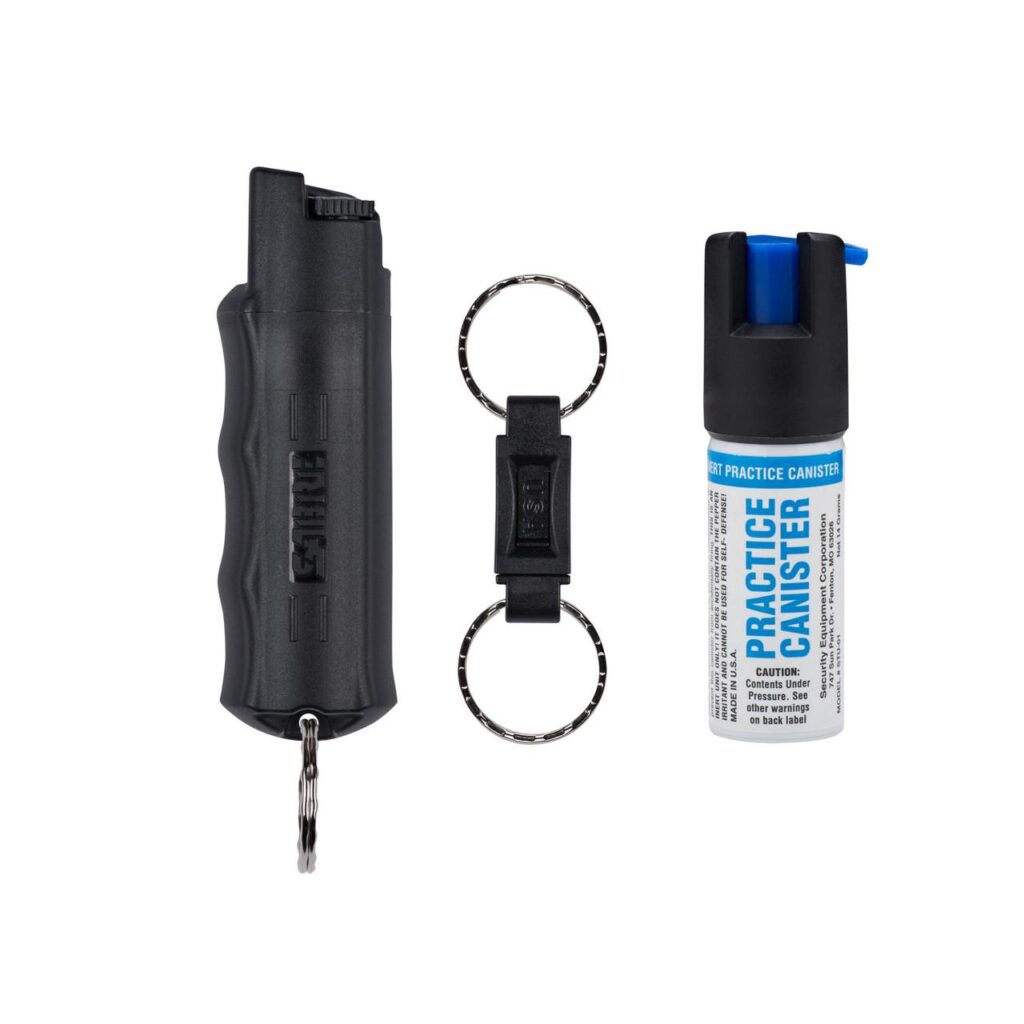Table of Contents
- Understanding the Impact of Pressure Loss on Pepper Spray Effectiveness
- Common Causes Behind Pressure Loss in Pepper Spray Canisters
- How to Diagnose and Test a Pepper Spray Canister’s Pressure Status
- Best Practices for Maintaining and Replacing Your Pepper Spray Canister
- Closing Remarks
Understanding the Impact of Pressure Loss on Pepper Spray Effectiveness
When a pepper spray canister experiences pressure loss, its ability to effectively disperse the chemical irritant diminishes significantly. Pepper spray relies on a pressurized propellant to forcefully eject the active ingredients in a fine, targeted mist or stream. Without sufficient internal pressure, the spray may sputter weakly or produce an inconsistent spray pattern, severely reducing the range and accuracy. This not only compromises the user’s ability to deter an attacker but also increases the risk of exposure to wind or other environmental factors that could blow the spray back toward the user.
Signs of pressure loss include:
- Difficulty in expelling spray or mist
- Drip-like discharge rather than a strong jet
- Shortened spray distance, often less than a few feet
- Reduced potency due to uneven dispersal
Maintaining your pepper spray’s optimal pressure is crucial to ensuring rapid, reliable protection. Regular checks and proper storage will help you avoid the dangerous consequences of a weakened canister when you need it most.
Common Causes Behind Pressure Loss in Pepper Spray Canisters
One of the primary reasons why a pepper spray canister might lose pressure is due to natural wear and tear. Over time, the internal propellant gases can slowly escape through minuscule flaws or cracks in the container’s seal. This gradual seepage reduces the internal pressure necessary for effective spray delivery. Additionally, exposure to extreme temperatures-especially excessive heat-can cause the canister’s contents to expand and contract repeatedly, compromising the integrity of the seals and joints.
Physical damage is another common culprit behind pressure loss. Dropping the canister or subjecting it to rough handling can deform the cylinder, causing leaks that are often invisible to the naked eye. It’s also important to consider the manufacturing quality. Inferior or expired products might not maintain pressure as reliably due to substandard sealing materials or deteriorated propellant compounds. Regular inspection and proper storage can help users avoid these issues and maintain the readiness of their self-defense tool.
- Natural gas seepage through seals
- Extreme temperature fluctuations
- Physical damage or deformation
- Poor manufacturing or expired product
- Improper storage conditions
How to Diagnose and Test a Pepper Spray Canister’s Pressure Status
To accurately gauge whether your pepper spray canister retains adequate pressure, start with a simple visual and physical inspection. Check for any visible signs of damage like dents, rust, or leakage around the nozzle and body, as these may indicate compromised integrity. Next, perform a gentle shake; a properly pressurized canister often contains a liquefied gas, so you should feel a slight sloshing inside. If the canister feels unusually light or hollow, it’s a clear indication that the internal pressure has diminished significantly.
For a more hands-on test, conduct a controlled spray test in a safe, open environment. Hold the canister upright and press the actuator firmly. A well-pressurized canister will expel a compact, forceful spray in a consistent stream or fog pattern. If the spray is weak, sputtering, or barely emits any product, this signals a loss of pressure. Remember to always wear protective eyewear during testing and avoid pointing it towards yourself or others. Regularly testing your canister every few months ensures your personal security device remains reliable when needed most.
Best Practices for Maintaining and Replacing Your Pepper Spray Canister
To ensure your pepper spray canister remains effective when you need it most, adopt a routine maintenance schedule. Store the canister in a cool, dry place away from direct sunlight and extreme temperatures, as heat can degrade the pressure inside. Regularly check the expiration date and inspect for any visible damage or rust on the nozzle and canister body. It’s also wise to perform a quick test spray in a safe environment every six months to confirm proper functioning-just be cautious not to waste the spray unnecessarily.
When it comes to replacement, keep these points in mind:
- Always replace your canister once it hits the expiration date or if you notice a drop in pressure or spray performance.
- Choose canisters from reputable brands that meet safety and quality standards.
- Never attempt to refill a used pepper spray canister, as this could compromise the integrity and safety of the device.
- Dispose of old or expired canisters responsibly, following local regulations for hazardous materials.
By following these guidelines, you’ll maximize the reliability of your pepper spray, ensuring it’s ready to deliver consistent power when protecting yourself in critical moments.
Closing Remarks
In conclusion, understanding what happens when your pepper spray canister loses pressure is crucial for ensuring your personal safety. A canister that has lost pressure may not deploy the spray effectively, leaving you vulnerable in a critical situation. Regularly checking the pressure, storing the canister properly, and replacing it according to manufacturer guidelines can help maintain its reliability. Remember, staying informed and prepared is the best way to protect yourself – so don’t overlook the importance of monitoring your pepper spray’s condition. Stay safe out there!Check Our Other Blogs
- StunGun – Your Trusted Source for Stun Guns, Laws, and Self-Defense Tips
- PepperSprayLaws – Your Trusted Resource for Pepper Spray Information
- StunGunLaws – Your Trusted Guide to Stun Gun Legality and Safety




